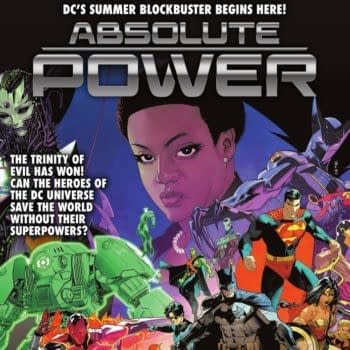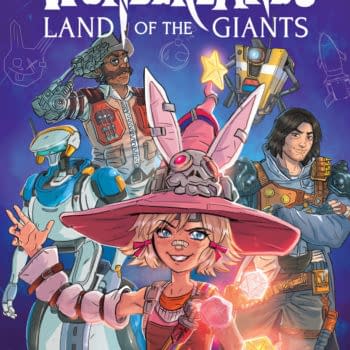Posted in: Comics | Tagged: Comics, dc, dc comics, dcyou, entertainment, gender, gendercrunching, marvel, Marvel Comics, women in comics
Gendercrunching Special Edition – #DCYou
By Tim Hanley
With all of DC's new titles and revamped returning books now released, it's time for a special edition of "Gendercrunching" to examine how #DCYou fared with female creators. The result, relative to the past few years of the New 52: not too bad. And when you're talking about women in comics statistics, "not too bad" is practically "good".
The chart below shows the percentages of female creators in every category for all of June's #DCYou titles. There are no Vertigo books, no digital first, no kid's titles; just the main line #DCYou books. We'll do June's full numbers down the road. I've also included some comparisons. First up is the original New 52, the 52 new #1 issues from September 2011. Second, we've got all of the titles from March 2015, the last regular month of DC Comics before "Convergence". I had to make a few choices with the March books; I decided to include the mainline books that didn't make their original shipping date and came out in April, I left out the "Endgame" one-shots because they're not regular series, and I left out the weekly books because there are no weeklies with #DCYou or the original New 52 (the change overall because of all of this ended up being a slight gain of 0.3%).
So let's take a look at how the numbers compare:

Compared to just a few months ago, #DCYou is very much in the same ballpark. The overall percentage of female creators was the exact same as it was in March. By category, things were a bit up and down, but not hugely so. Female cover artists were down a bit, while writers were up very slightly (it's the exact same number of women writers, there was just one more male writer in March, thus the tiny percentage shift).
For female artists, pencillers were up significantly, though again there's not a big change in the raw numbers. There's one more woman pencilling a book in June than in March. The percentage jumped so much because there were a lot more men pencilling in March (presumably to get all of the books out on time before "Convergence", several March books had multiple pencillers; the June books did not). Inkers rose by percentage too, but it was a similar situation. There were actually the same number of female inkers both months, just fewer men in June.
Female colorists dropped, and noticeably so looking just at the raw numbers too, falling from 5 in March to 3 in June. This was the only #DCYou category with a lower percentage showing than the New 52. Letters stayed about the same, with one woman holding down the lettering fort.
With a lot of turnover because of DC's move to Burbank, the sharp changes in editorial aren't a huge surprise. The percentage of female editors fell considerably, with Rachel Gluckstern no longer editing any Bat-books, but the assistant editor numbers increased massively with the addition of Rebecca Taylor, and Brittany Holzherr staying on from "Convergence" (Taylor is also the main editor of a handful of titles, with Marie Javins editing a couple of books as well).
All together, the ups and downs about equaled out, and DC is pretty much where they were before #DCYou began.
This is both good and bad. Good, because it's not worse. DC is notoriously terrible at female representation during big events (see: The New 52), so the numbers not changing much with #DCYou is a pleasant change of pace.
But it's bad for two reasons. First, nothing really changed. In a mini-relaunch that was supposed to about exciting new changes and diverse new voices, the number of women involved stayed the same (if you want to get technical, it's actually a little less; there were 34 credited female creators in March, and 33 in June). This was a huge opportunity to mix things up and increase the number of women voices at DC Comics, and it didn't happen. Hooray the numbers weren't worse, but this was the perfect time for them to get better.
Second, 8.7% female creators overall is not a great number. The 33 female credits in the #DCYou books are countered by 345 male credits. That's more than TEN TIMES as many. Progress has definitely been made since the New 52 debuted, and female representation is certainly more evenly distributed, but 8.7% is still paltry, especially given the boom in fantastic female creators over the past few years. With female readers growing at a massive rate and women more involved in the comic book industry than ever, 8.7% is far too low. DC should be able to do much better than that.
To learn more about this statistics project and its methodology click here, and to see the previous stats click here. You can visit Tim at Straitened Circumstances and follow him on Twitter @timhanley01. His book Wonder Woman Unbound: The Curious History of the World's Most Famous Heroine is available now.















